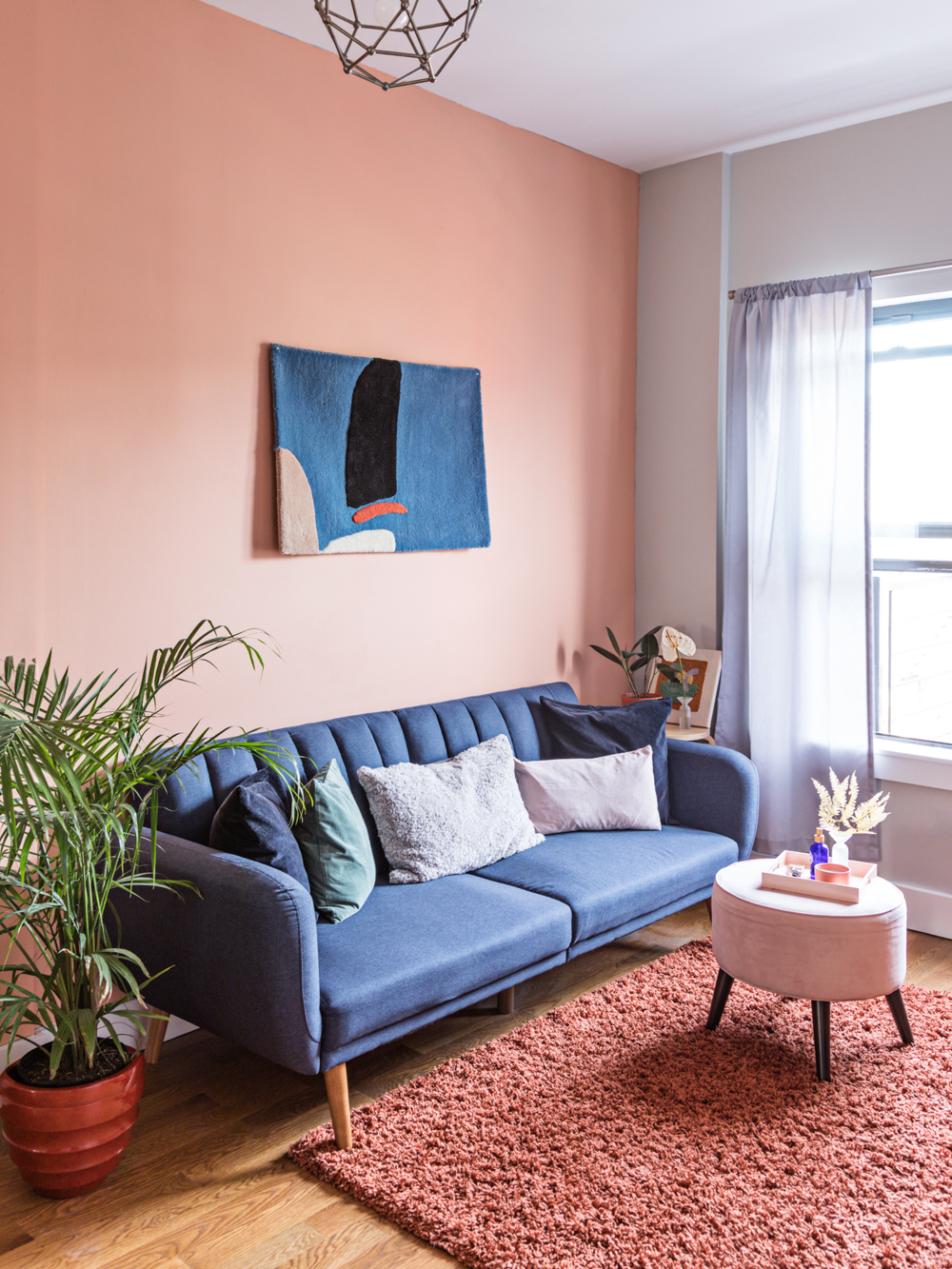We may earn revenue from the products available on this page and participate in affiliate programs.
Spending 24-7 indoors makes it exponentially tougher to ignore those white walls you’ve been meaning to paint. There’s no time like the present to tackle the transformation—or is there? The fact remains you’re stuck inside and therefore unable to relocate while those fresh coats dry. Should you scrap your plan? Not if you’re using low-VOC paint.
Because it emits fewer fumes than a traditional pick might, low-VOC paint is a safer option—and you don’t have to sacrifice a great wall color to use it. Brands such as Backdrop, Clare, Behr, Sherwin-Williams, Farrow & Ball, and more have hopped on the bandwagon. Ready to pull out a roller brush? Here, Meghan Stewart, senior director of B2C sales at Paintzen, and Caleb Ebel, cofounder of Backdrop, explain everything you need to know about low-VOC paint so you can tackle your next project with confidence (and if you still have paint questions, you can find those answers here).
It’s Better for Your Health and the Environment
VOCs—volatile organic compounds—are a major source of indoor air pollution and can have a range of health effects, from minor irritations to chronic respiratory issues. They are also a big factor in the creation of smog, and can be found in everything from building materials; furniture; (ironically) air fresheners; and, historically, paint.
But over the past decade, more and more brands have released low-VOC paints as a safer, better-for-the-planet alternative. These options are especially preferable for people with allergies, those with sensitivities to smell, and children, Stewart notes.
Keep an Eye Out for a Little Green Label
What’s considered low VOC can vary from paint to paint, so look for certifications from third parties, like GreenWise or GreenGuard, which confirms the product you’re picking up has been rigorously tested to ensure its minimal impact on your health and the planet.
It’s Safe to Use While You’re Stuck Indoors
When you’re painting your walls, they will still off-gas VOCs—this is hard to get around—but as soon as they’re dry, you no longer have to worry about fumes. To mitigate the damage these emissions might do in the meantime, simply open your doors and windows and turn on a fan if you have one. If you paint your bedroom in the morning, by the time it’s dry at night, it will be totally safe to sleep in that room.
But It’s Not Totally Odor-Free
That said, just because the coat you’re applying to your wall gives off fewer pollutants doesn’t mean it won’t still smell like, well, paint. Low-VOC options do tend to be less odorous than the alternatives, but you’ll still notice them, especially before they’ve fully dried.
You Shouldn’t Throw It in the Trash
Low-VOC paints may be the better option for the environment, but that doesn’t mean leftovers can be thrown in the trash. For safe disposal, call your local authorities to schedule a pickup or look up instructions at your nearest recycling center. Or save it for a rainy day—when stored with a secure lid and kept away from extreme temperatures, paint can last for up to two years.
See more stories like this: This Couple Struck Gold When They Decided to Restore Their Plaster Walls A Sock Subconsciously Inspired This Designer’s Kitchen Cabinets The Most Versatile Stools You’ll Ever Meet
